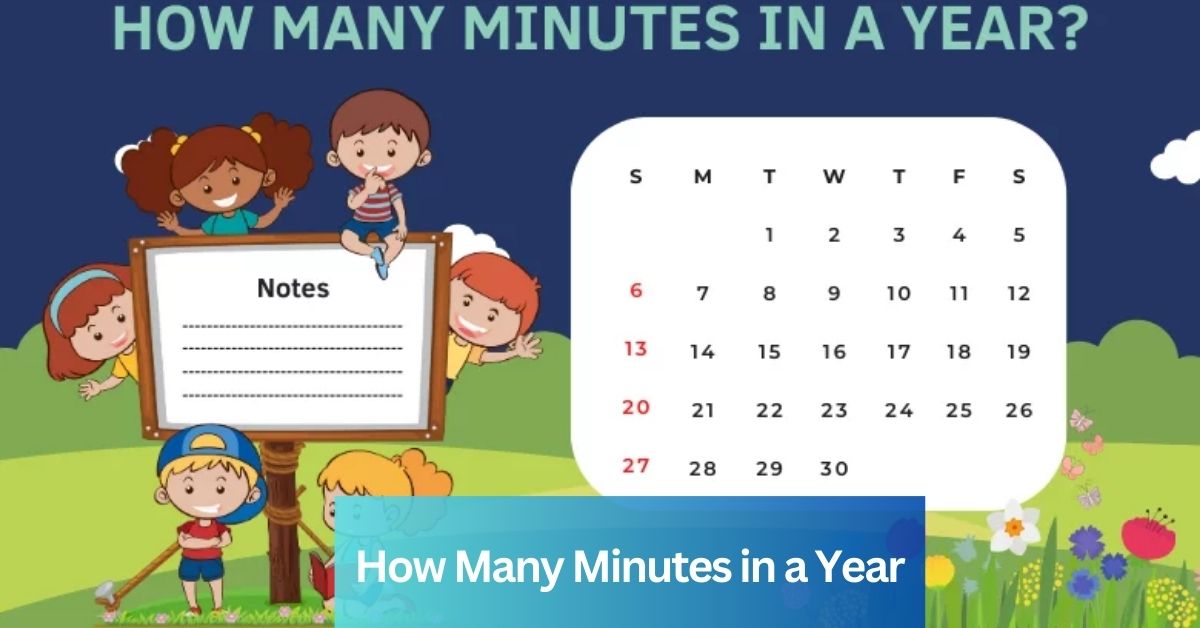Time, an intangible force that governs our existence, remains one of the most intriguing aspects of our lives.
As we embark on a journey to understand its intricacies, we delve into the common yet thought-provoking question: “How many minutes in a year?”
This inquiry goes beyond mere calculation, unlocking a realm where mathematics meets philosophy and culture intertwines with technology.
Table of Contents
The Question: How Many Minutes in a Year?
At first glance, the answer seems straightforward, but as we explore further, we uncover nuances tied to the concept of leap years and the meticulous calculations that bridge the gap between standard and extended years.
Breaking Down a Year:
Before we unveil the answer, let’s dissect a year into its components. We’ll unravel the mysteries of days, hours, and ultimately, minutes, understanding the foundation upon which our temporal structure rests.

Measurements and Units in Mathematics:
In the world of mathematics, measurements are more than numerical values—they are gateways to understanding the physical world.
We’ll explore the significance of units and their role in providing context to measurements, setting the stage for our journey into the realm of time.
Time as a Measurement:
Time, often considered abstract, takes center stage as a measurable entity. We’ll delve into its role as a crucial element in mathematical calculations, recognizing its place as a common denominator that connects various aspects of our lives.
Also Read: Explore Essential Health Packages Every Woman in Her 40s Needs Now
Calculating Minutes in a Year:
The heart of our quest lies in understanding how to calculate the minutes in a year. We’ll break down the process, demystifying the numbers and shedding light on the distinctions between standard and leap years.
Time Management Tips:
As we contemplate the minutes ticking away, it’s only natural to consider the practical implications of time in our daily lives.
Time management tips will be explored, offering insights into making the most of every precious minute.
Philosophical Reflections on Time:
Beyond the numerical aspects, time carries profound philosophical implications. We’ll embark on a contemplative journey, exploring how different cultures and thinkers perceive the essence of time and its impact on our existence.
Time-Related Idioms and Sayings:
Language often mirrors our relationship with time. We’ll unravel the richness of time-related idioms and sayings, discovering how our expressions reflect the complex dance between humanity and the ticking clock.
The Concept of Leap Year:
A leap year introduces a fascinating twist to our exploration. We’ll delve into the history and purpose of leap years, understanding why an extra day is added to our calendars and how it impacts our calculations.

Time Measurement Devices:
From ancient sundials to modern atomic clocks, humanity has sought to measure time with increasing precision.
We’ll explore the evolution of timekeeping devices, marveling at the ingenuity that has allowed us to capture the essence of fleeting moments.
Also Read: Technical Masterminds Unleashed: Pioneering Innovations
The Psychology of Time:
How we perceive time shapes our experiences. In this section, we’ll delve into the psychology of time, exploring how our mental frameworks influence our understanding of past, present, and future.
Cultural Celebrations and Time:
Cultures around the world mark time through celebrations and rituals. We’ll journey through various cultural perspectives, understanding how different societies weave their narratives around the tapestry of time.
Time in Technology:
Advancements in technology have not only refined our ability to measure time but have also altered our relationship with it. We’ll explore the intersection of time and technology, considering how innovations impact our daily lives.

Time Travel Concepts:
The idea of time travel has captivated human imagination for centuries. We’ll take a speculative leap into the realm of time travel concepts, examining how literature, cinema, and science have painted scenarios of traversing the temporal landscape.
Also Read: Onee-chan wa Game O Suruto Hito Ga Kawaru Onee-chan
Conclusion:
As we wrap up our exploration, we find ourselves standing at the crossroads of mathematics, philosophy, culture, and technology.
The question that initiated our journey, “How many minutes in a year?” now carries a depth of understanding, transcending the numerical response.
Time, in all its dimensions, remains an ever-flowing river, and our quest to comprehend its intricacies is an ongoing voyage, filled with perpetual fascination and discovery.
FAQ’s:
Q1: Can time be measured beyond minutes?
Yes, time can be measured in smaller units like seconds, milliseconds, and nanoseconds, providing more precision beyond minutes.
Q2: How do leap years impact our daily lives?
Leap years ensure our calendars align with Earth’s orbit, preventing a gradual misalignment, but their impact on daily routines is minimal.
Q3: Are there cultures without a concept of minutes?
Some ancient cultures, like the Mayans, used unique calendrical systems but didn’t have an equivalent concept of minutes as we know them today.
Q4: Do all calendars have leap years?
No, not all calendars incorporate leap years. Some, like the Islamic calendar, follow different principles without the need for periodic adjustments.
Q5: How do digital devices maintain time accuracy?
Digital devices, including atomic clocks, utilize stable oscillations of atoms, ensuring precise timekeeping and synchronization across various technologies.
Q6: Is the psychological perception of time universal?
No, cultural differences influence how individuals perceive time psychologically, leading to diverse perspectives on the past, present, and future.
Q7: Can time be affected by factors like gravity?
According to Einstein’s theory of relativity, gravity can influence time, causing it to pass more slowly in stronger gravitational fields, as observed near massive objects like black holes.
